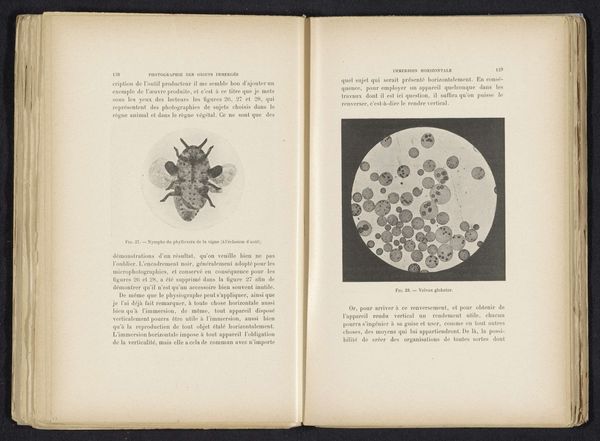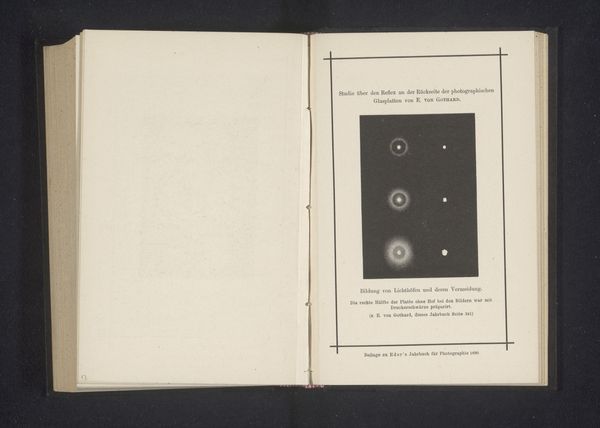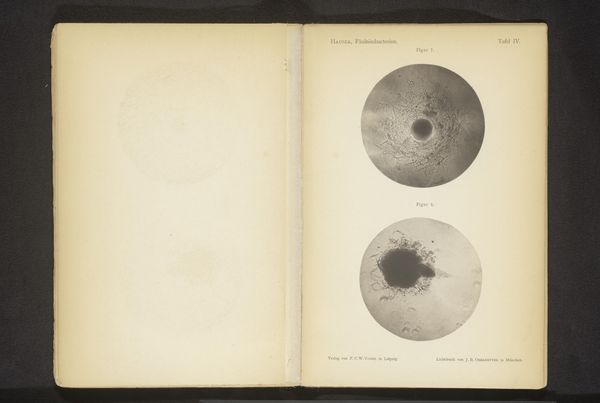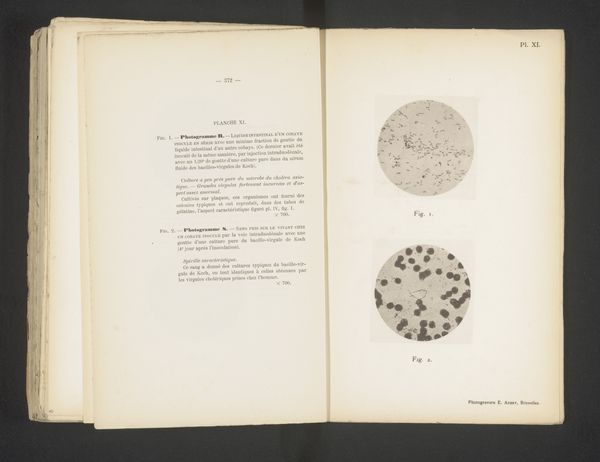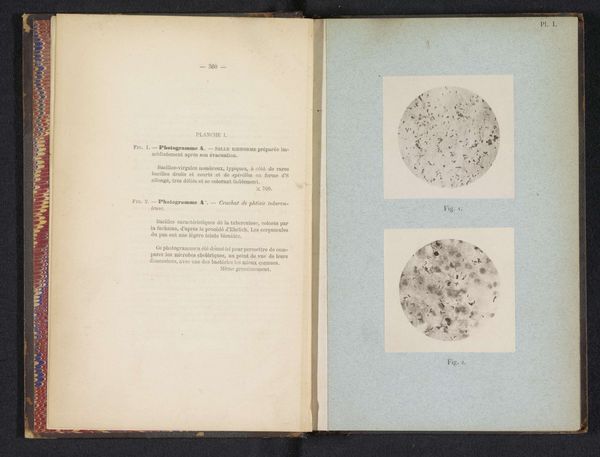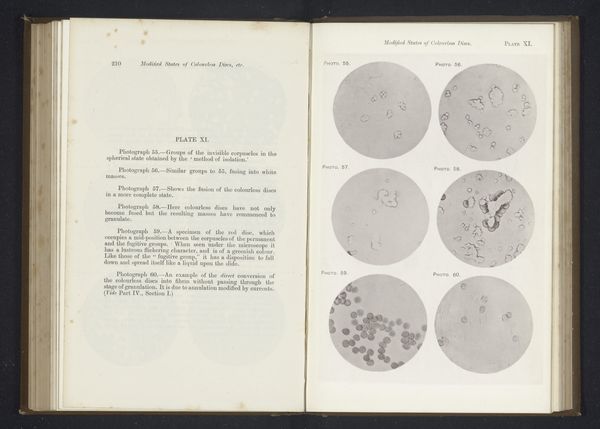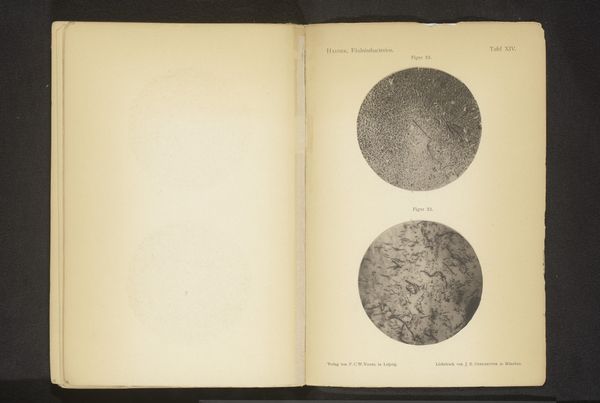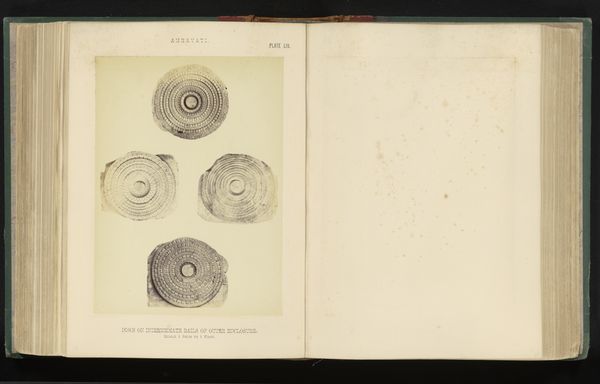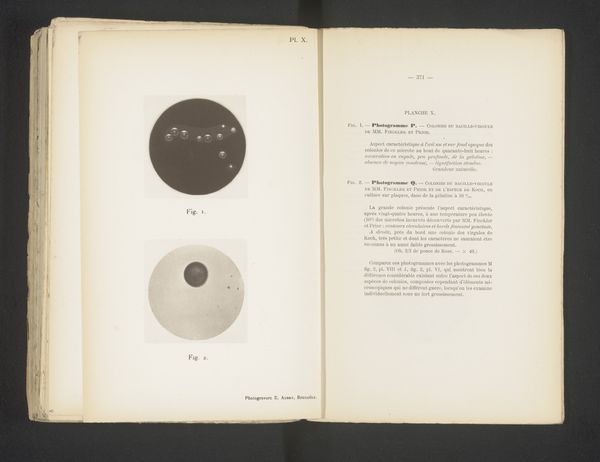
Uitvouwbare bladzijde met negen afbeeldingen van een waterdruppel op verschillenden oppervlakten before 1895
0:00
0:00
lithograph, print, paper, photography
#
aged paper
#
still-life-photography
#
homemade paper
#
lithograph
#
paperlike
# print
#
hand drawn type
#
paper
#
photography
#
personal sketchbook
#
hand-drawn typeface
#
fading type
#
stylized text
#
thick font
#
handwritten font
#
academic-art
Dimensions: height 224 mm, width 300 mm
Copyright: Rijks Museum: Open Domain
Editor: Here we have an open book page showing nine images called “Uitvouwbare bladzijde met negen afbeeldingen van een waterdruppel op verschillenden oppervlakten,” by A. Chevalley, created before 1895. They appear to be photographs, maybe transferred as lithographs, showing water droplets on different surfaces. What jumps out at me is the attention to scientific observation, almost like a manual or an encyclopedia plate. What do you make of it? Curator: Indeed. It's fascinating to consider the labor involved in this almost clinical documentation. Think about the production of photographic materials at the time. What kind of resources would Chevalley have needed to conduct this study of liquids on surfaces and share it with others? Editor: So, you’re saying we should think beyond just the artistic merit of the photographs and focus on the social and economic conditions that allowed this kind of image-making? Curator: Precisely. Consider the paper itself. It's described as "homemade." What implications does that hold for the artwork's value? It’s not just about what the image depicts, but also how it was physically realized. Also, what expectations does the presentation style provoke within us? Editor: It is sort of surprising to see something so seemingly scientific using materials described as “aged” or “homemade.” It challenges my understanding of objective studies. So, this approach connects the photograph's existence to things like material sourcing and book production... Curator: Exactly. We can view this not just as a piece of art or science, but as a document deeply embedded in its material circumstances, reflecting particular forms of labor, craft, and early scientific exploration and popularisation. Editor: I see that now. Thinking about all that context definitely gives me a broader perspective. I would have focused solely on aesthetics initially, now I know that production shapes meaning. Curator: It’s those often-overlooked processes of creation that bring the work into clearer focus.
Comments
No comments
Be the first to comment and join the conversation on the ultimate creative platform.

